Historic hardware: the story of the Gibson SG
How the solidbody guitar became a solid gold hit
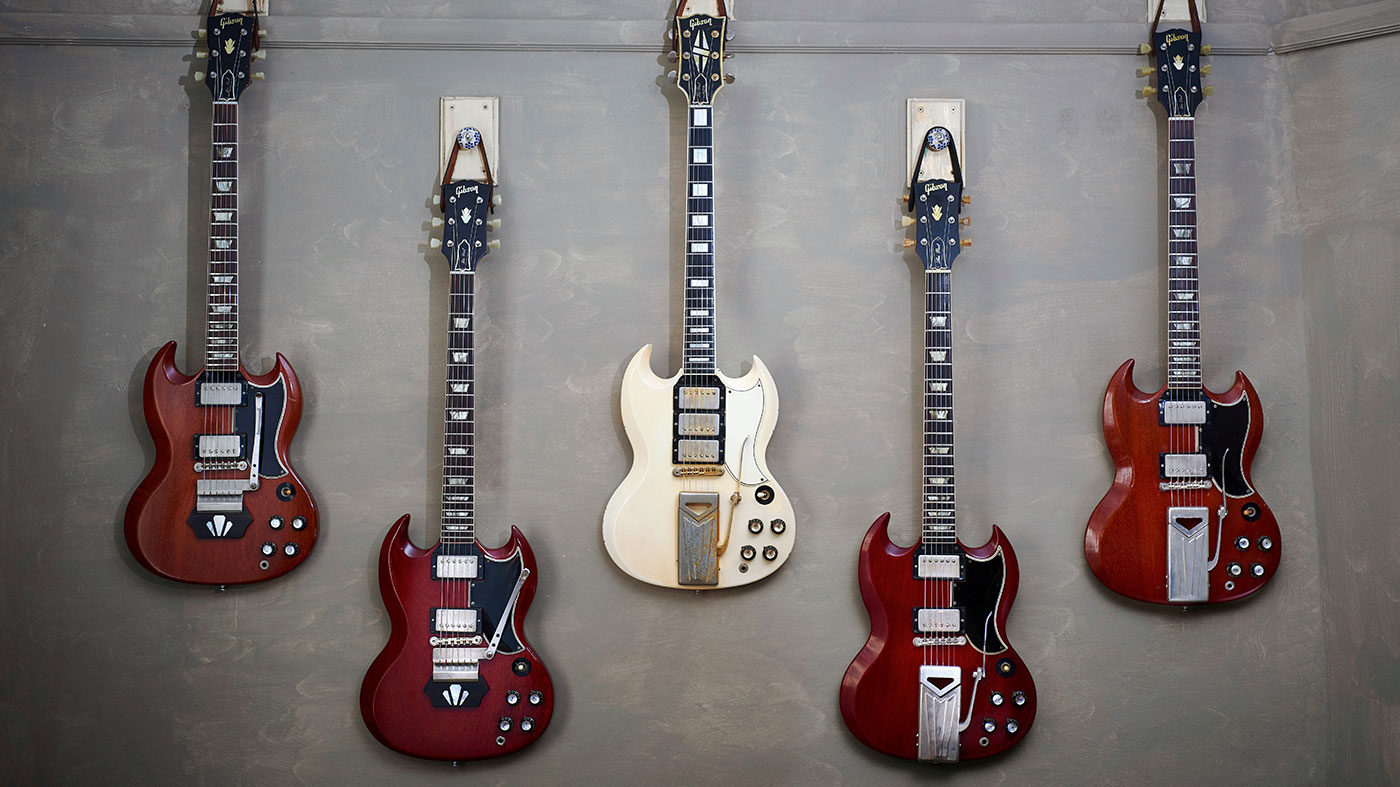
Introduction
Designed to break Fender’s hold on the early 60s guitar market, Gibson’s rebooted Les Pauls survived spec tweaks, a name change and the ire of Mr Paul himself, to become the brand’s biggest-selling guitars
It’s Thursday, 7 May 1964 at Chorlton railway station on Wilbraham Road in Manchester. As a Granada TV crew shoot footage for a programme called The Gospel and Blues Train, American rock ’n’ roll pioneer Sister Rosetta Tharpe arrives in a horse-drawn carriage, climbs out and turns to face an audience of blues-obsessed students and mods on the opposite platform. Just as the heavens open, she launches into Didn’t It Rain? pulls off a killer guitar solo then jokes, “Pretty good for a woman, ain’t it?”
The SG Standard is Gibson’s biggest-selling solidbody guitar of all time
Tharpe’s incendiary performance - and those of her fellow travellers Muddy Waters and Sonny Boy Williamson - lit a fire under the kids who caught the show, some of whom formed blues bands in its wake.
Looking back at the footage, what makes it even more notable is Tharpe’s choice of guitar. The good sister was an early adopter of the SG-bodied Gibson Les Paul Custom…
From mid-1961 to 1963, the guitars we now know as the Gibson SG Standard and SG Custom were actually labelled as Les Paul models. At the end of that period they were officially renamed as SGs (Solid Guitar). The SG Standard - as cherished by Angus Young of AC/DC, Revolver period Beatle George Harrison, Cream-era Eric Clapton (with his psychedelic ‘Fool’ guitar), Robby Krieger of The Doors and Modfather Paul Weller - is Gibson’s biggest-selling solidbody guitar of all time.
Just like the original single-cutaway Les Paul models, the new guitars inspired a couple of more affordable models: the single P-90 SG Junior and the twin P-90 SG Special, the latter used and abused to great effect by Pete Townshend of The Who.
Although they weren’t part of the SG family, the twinhorn body shape was assigned to the entrylevel Melody Maker from 1966, the EB-0 and EB-3 bass guitars, and Jimmy Page’s favourite EDS-1275 doubleneck behemoth.
We’re aided and abetted in this pick through the birth of the iconic double-cut by Paul Tucker of Vintage ‘n’ Rare Guitars in Bath, who recently took delivery of the ’61 Les Paul Custom and ’61 and ’62 Les Paul Standards that grace these pages with their awesomeness. First, some SG history 101…
Don't Miss
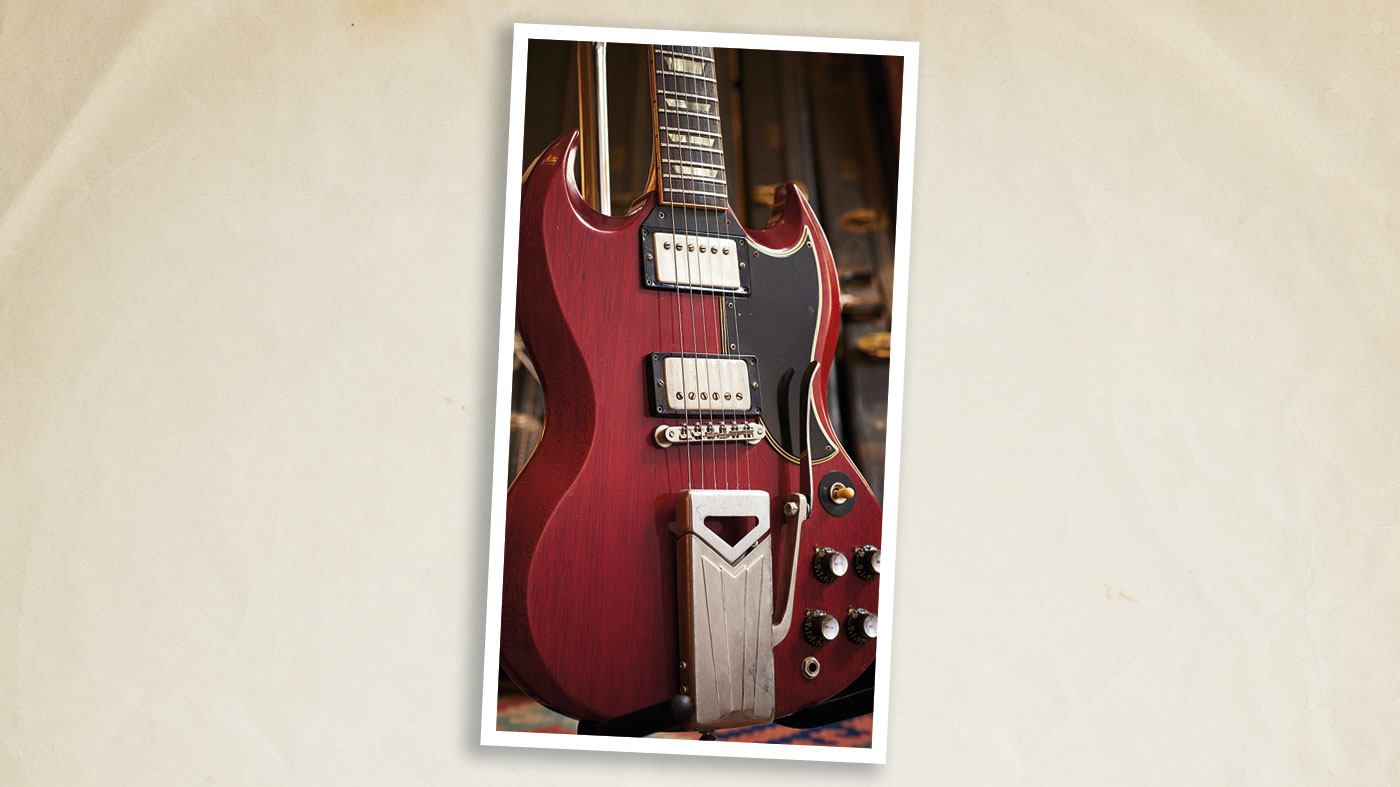
Back to the start
The rebooted Les Paul Standard and Custom models were launched in 1961 in an effort to save a company in trouble. As crazy as the situation appears today, sales of your classic single-cutaway Les Paul Standards had flatlined in the late 50s.
Gibson desperately needed a winner. It’d already suffered major flops with the Flying V and Explorer models; yes, two guitars that would eventually become rock icons inspired little more than a collective shrug from the guitar-buying public of ’58 and ’59.
Custom colour Fenders were not your daddy’s guitar. In fact, Gibson Les Pauls looked more like something granddaddy would approve of
Let’s make no bones about it: Fender owned the electric guitar market in the late 50s and had effectively taken control thanks to this skinny kid with glasses from Lubbock, Texas. It’s impossible to overstate just how important Buddy Holly was to the exploding popularity of the Fender Stratocaster.
Holly wasn’t your typical rock ’n’ roll hero. He wasn’t off-the-charts handsome like Elvis Presley, a rebel like Eddie Cochran and Gene Vincent, or an exceptional guitarist like Chuck Berry. Yet when Holly, and his band The Crickets, played That’ll Be The Day and Peggy Sue on The Ed Sullivan Show on 1 December 1957, there wasn’t a kid in America who didn’t want to be him or own a Strat.
The same thing happened in the UK when the band’s The “Chirping” Crickets album was released here in 1958. Holly was pictured cradling a Sunburst Strat on the cover and that image changed the lives of British kids like George Harrison, John Lennon and Paul McCartney.Over in Kalamazoo, Michigan, Gibson president Ted McCarty had already assured his place as a design genius when he developed the original Les Paul models, the ES-175, ES-335, the aforementioned Flying V and Explorer, and their infamous lesser-spotted sibling, the Moderne. Now, spurred on by some trash talk leaking out of Fullerton, California, he set his sights on building a Fender buster.
“Fender was talking about how Gibson was a bunch of old fuddie-duddies,” McCarty told Vintage Guitar magazine, “and when I heard that through the grapevine, I was a little peeved. So I said, ‘Let’s shake ’em up.’ I wanted to come up with some guitar shapes that were different from anything else.”
First order of business, then: know your enemy. The Stratocaster is a lightweight, affordable machine with a slim neck. The thing looks bloody smart, too, a fact not lost on the kids who caught sight of the late-50s models sprayed in the same DuPont colour codes detailed on the Cadillac (Dakota Red, Olympic White), DeSoto (Shell Pink) and Mercury (Sherwood Green Metallic) sleds rolling out of Detroit.
The message? Custom colour Fenders were not your daddy’s guitar. In fact, Gibson Les Pauls looked more like something granddaddy would approve of. McCarty set to work…
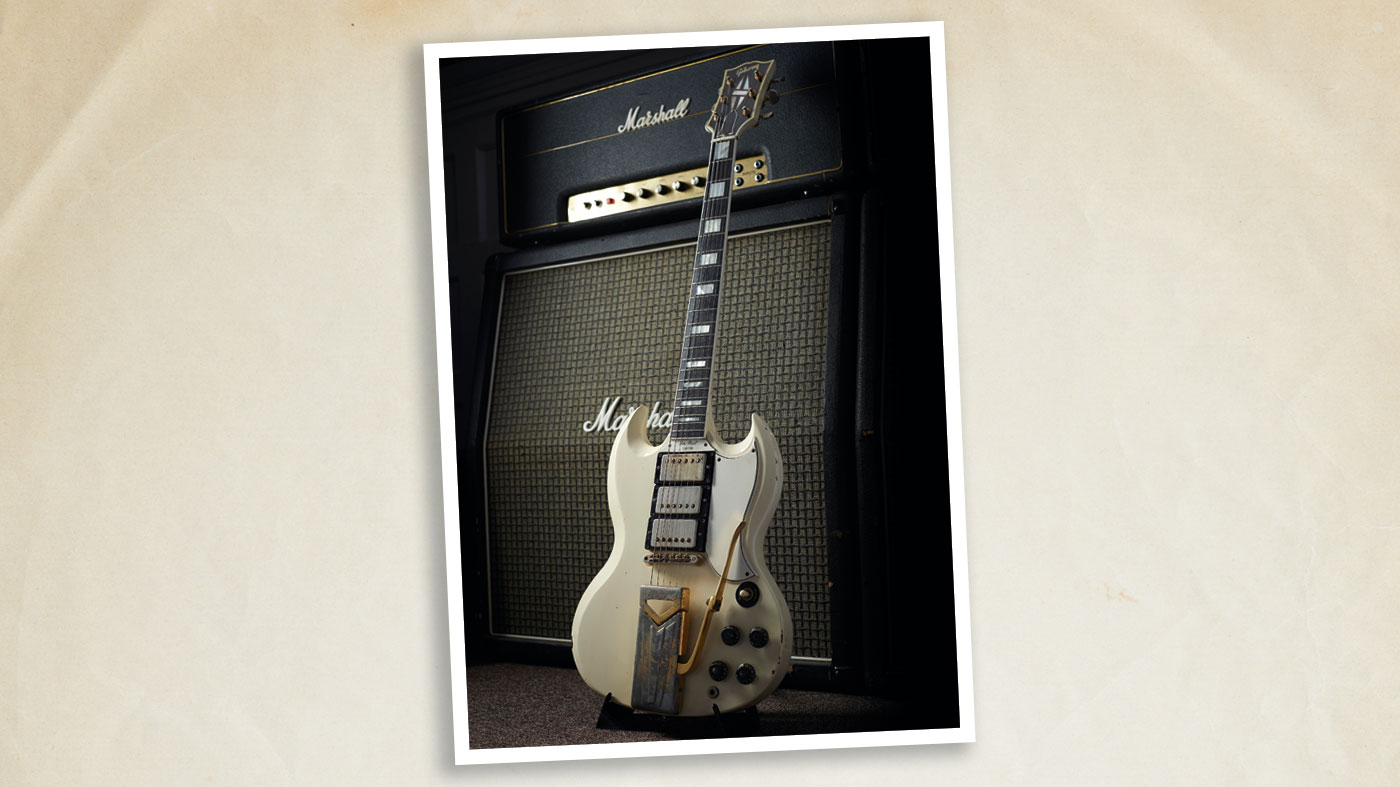
A weighty issue
To reduce the weight of the existing Les Paul Standard, McCarty stripped it of its maple top, electing instead to design a thinner 1 3/8-inch (35mm) deep mahogany body that looks something like a number eight wearing a pair devil horns.
Big misconception number one: it’s not the mahogany that makes a Les Paul Standard or Custom heavy. It’s the maple, and McCarty bevelled his new body design’s top and back to cut its bulk and weight still further. He added an ultra-slim neck with fantastic upper fret access, and an unobtrusive body/neck join, plus a pair of PAF (Patent Applied For) humbuckers for the Les Paul Standard, and three PAFs for the top-of-the-line Les Paul Custom.
McCarty bevelled his new body design’s top and back to cut its bulk and weight still further
The PAF ’buckers weren’t specially designed for the new Les Paul/SGs. They were from the same parts bins as those pickups fitted to the earlier ’57-through-’60 Les Pauls with various magnets (Alnico II, III, IV, and V). Between 1957 and ’61, the DC resistance of PAFs ran between 7.5k and 9.5k.
The wiring loom on the Standard is your classic three-way bridge humbucker, bridge and neck, and neck solo arrangement. On the Custom, it’s bridge, middle and bridge (with no tone or volume adjustment for the middle pickup), and neck solo. Both models have two volume and two tone controls.
The SG Standard famously fuelled Eric Clapton’s ‘woman’ tone and Tucker reckons the ’61 Custom at Vintage ‘n’ Rare sounds special, too: “With the bridge pickup selected, turn down the tone and you get an amazing cocked wah sound that works great with fuzz.”
At some point in 1962, Gibson switched from PAF humbuckers to the ‘Patent Number’ versions. By now, they were pretty much fitted with Alnico V magnets exclusively and the DC resistance hovered around 7.5k. Typically, the crossover was gradual. “One of our ’62 SGs has two PAFs, the other has Patent Number pickups,” says Tucker. “I’ve seen a ’62 with one PAF and one Patent Number pickup.”
Other specs were common to the earlier single-cut Les Paul models. For example, the original and SG-bodied Standards shared a rosewood ’board with trapezoid pearl inlays and nickel hardware. The old and new Customs featured an ebony ’board, m-o-p block inlays and gold hardware.
As you’d expect, all models came with Gibson’s 24.75-inch scale length. For future SG sponsors such as Angus Young of AC/DC, McCarty had nailed the perfect rock guitar. “I tried a Les Paul when I was a lot younger and because of the weight of the thing it nearly dislocated my hip,” he told Guitar World. “I’ve always found with SGs that if you are a short guy - about 5ft 2in [laughs] - you can get your hands around them.”
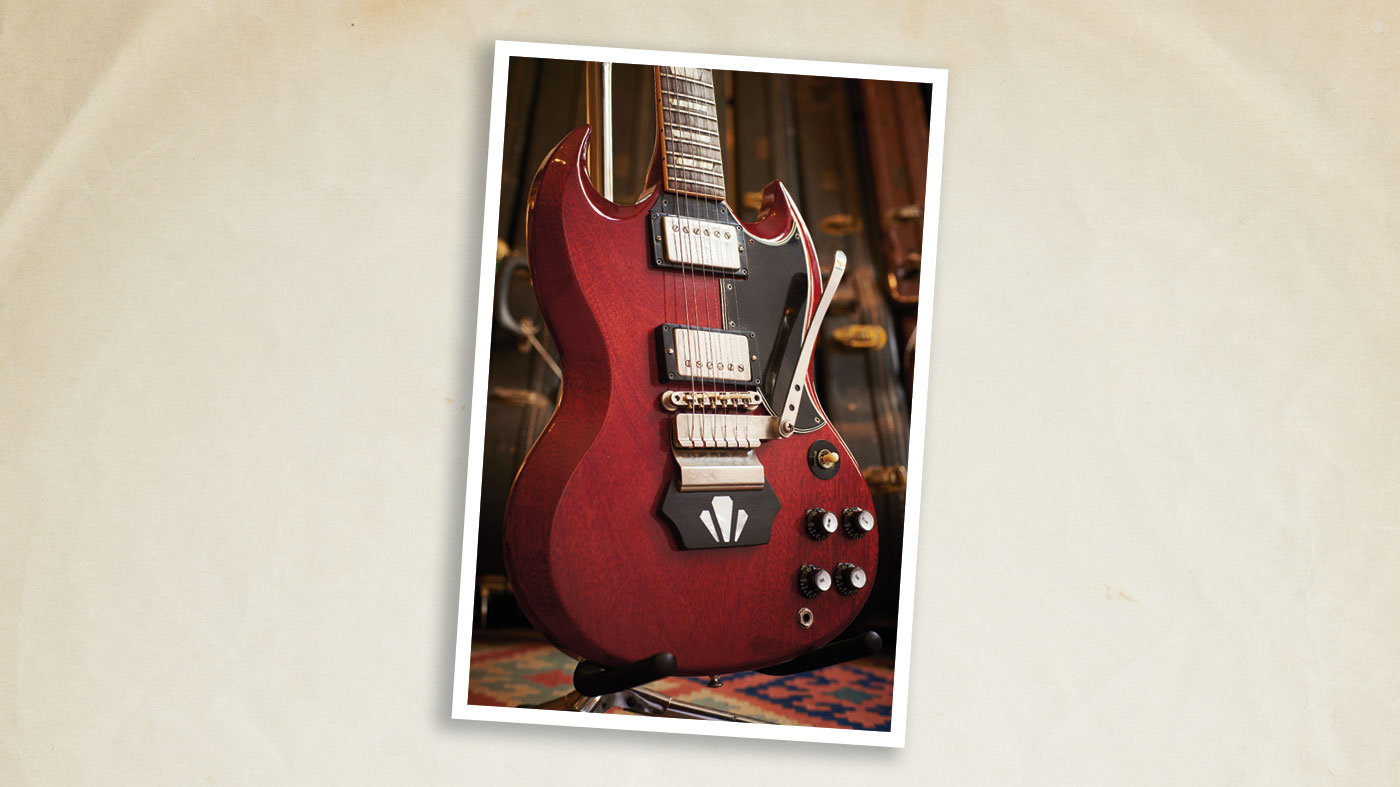
LP disagrees
The project paid off commercially, too. Gibson sold around 1,700 Les Pauls between 1958 and 1960. In 1961 alone, it shipped 1,662 SG-bodied Les Paul Standards and 513 Les Paul Customs. Add in the 2,151 Juniors, 1,186 Specials and 256 TV models that shifted that year and it’s fair to say McCarty had earned his Christmas bonus.
Not that everybody was happy. It’s now the stuff of legend that the one guitarist who couldn’t stand the relaunched Les Paul models was the man whose name was all over them. “We’ll never know the real reason why Les Paul rejected the SG,” says Paul Tucker.
The one guitarist who couldn’t stand the relaunched Les Paul models was the man whose name was all over them
True, but there are a number of theories. Les Paul, with his wife and musical partner, Mary Ford, was a huge star in the late 40s and the length of the 50s. By the dawning of the new decade, though, his popularity was waning. One theory is that Gibson didn’t see the point of renewing Les’s contract and was simply using up a consignment of ‘Les Paul model’-embossed truss rod covers before they pushed him overboard.
Another more plausible theory has it that the wily old fox was reluctant to sign another contract with Gibson because his wife Mary, who he was in the throes of divorcing, would get a share of the proceeds. If that’s true, it didn’t stop the couple appearing in ads for the new models.
In fact, Ford owned a white SG-bodied Custom for years. It was recently featured on an episode of Las Vegas-based reality show Pawn Stars. Of course, Les could simply have been miffed that he wasn’t asked to contribute to the redesign.
Big misconception number two: his name might be all over the ’52 Les Paul and its noble descendants, but the man himself had virtually no input into its design. He did inspire the guitar’s creation after approaching Gibson with a suggestion for a solidbody, and was asked for his opinion on the prototype as a courtesy, but Ted McCarty always maintained that Paul’s contribution was cursory.
In the case of the SG-bodied reboots, Les was left out of the loop completely, once claiming that he’d first eyeballed his new signature models in a shop window. “They put out a Les Paul guitar, and it wasn’t with my blessings at all,” said Les in the 80s. “They put the pickup in the wrong place, they made the body too thin, you could pull on the neck and change keys… There were a lot of things wrong with it. So I said, ‘Clean that one up a little bit, will ya, before you put my name on it?’ So they took my name off it and continued to make it and it’s their number one selling solidbody.”
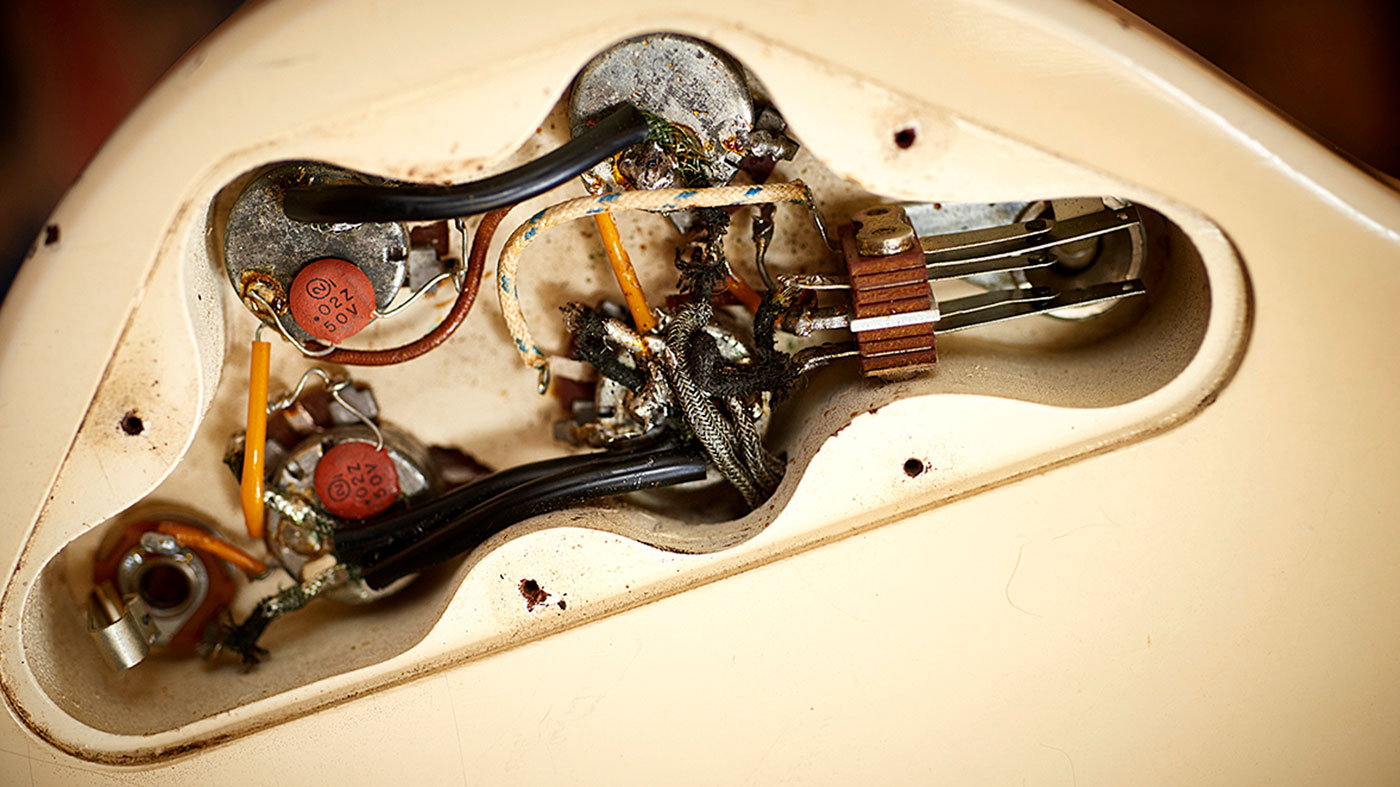
Construction job
Sour grapes or not, Les had a point about the new Les Paul model necks. They were seriously thin with a weak body/neck join. Subsequently, early SG/Les Pauls with repaired headstocks and neck heels are common.
According to Paul Tucker, the flimsy body/neck join was not a new problem for Gibson. “On early Les Paul Specials, they routed into the neck tenon to accommodate the neck pickup,” he says. “If you find one of those guitars that hasn’t had a neck joint repair, it’s rare.”
On American-made vintage gear, the pots provide an excellent opportunity to date a piece of equipment
The basic construction wasn’t the only issue. For the ’61 debut, McCarty had spec’d a tune-o-matic bridge and a Deluxe vibrato for the revamped Standard and Custom. Like the now infamous Kauffman vibrato fitted to Rickenbacker guitars in the 50s (including John Lennon’s pre-Beatlemania 325), Gibson’s Deluxe unit was a piece of over-engineered trash. The fact that it didn’t return to pitch was annoying enough, but as its “sideways” nickname suggests, you operated it by pulling its arm from side-to-side.
By 1962, McCarty addressed the Deluxe vibrato issue, replacing it with the much more reliable Maestro unit. “Most players prefer the Maestro,” says Tucker. “The Deluxe vibrato can feel counter-intuitive if you’re used to anything else.”
The Maestro was finished off with a mother-of-pearl ebony block that disguised the vibrato’s mounting screws. “That was for ’62 only,” comments Tucker. “You’ll never see the ebony block on another year.”
Dating a vintage SG is made easier thanks to some if its other components. “The interesting/geeky thing about guitar pots is that they are always stamped with a code,” says Tucker. “On American-made vintage gear, the pots provide an excellent opportunity to date a piece of equipment by referencing their ‘source-date code’. This code can normally be broken down into three main components: the manufacturer, and the year and week of manufacture.
“On our 1962 Gibson Les Paul, for example,” Tucker adds, “the pot source-date code reads ‘134 6244’. This means the pots were made by CentraLab (134) in 1962 (62) in the first week of November (44). This can only mean that the guitar was finished after the pots were made, therefore our guitar must be from very late 1962. It’s another little piece of the puzzle when it comes to accurately dating a vintage guitar.”
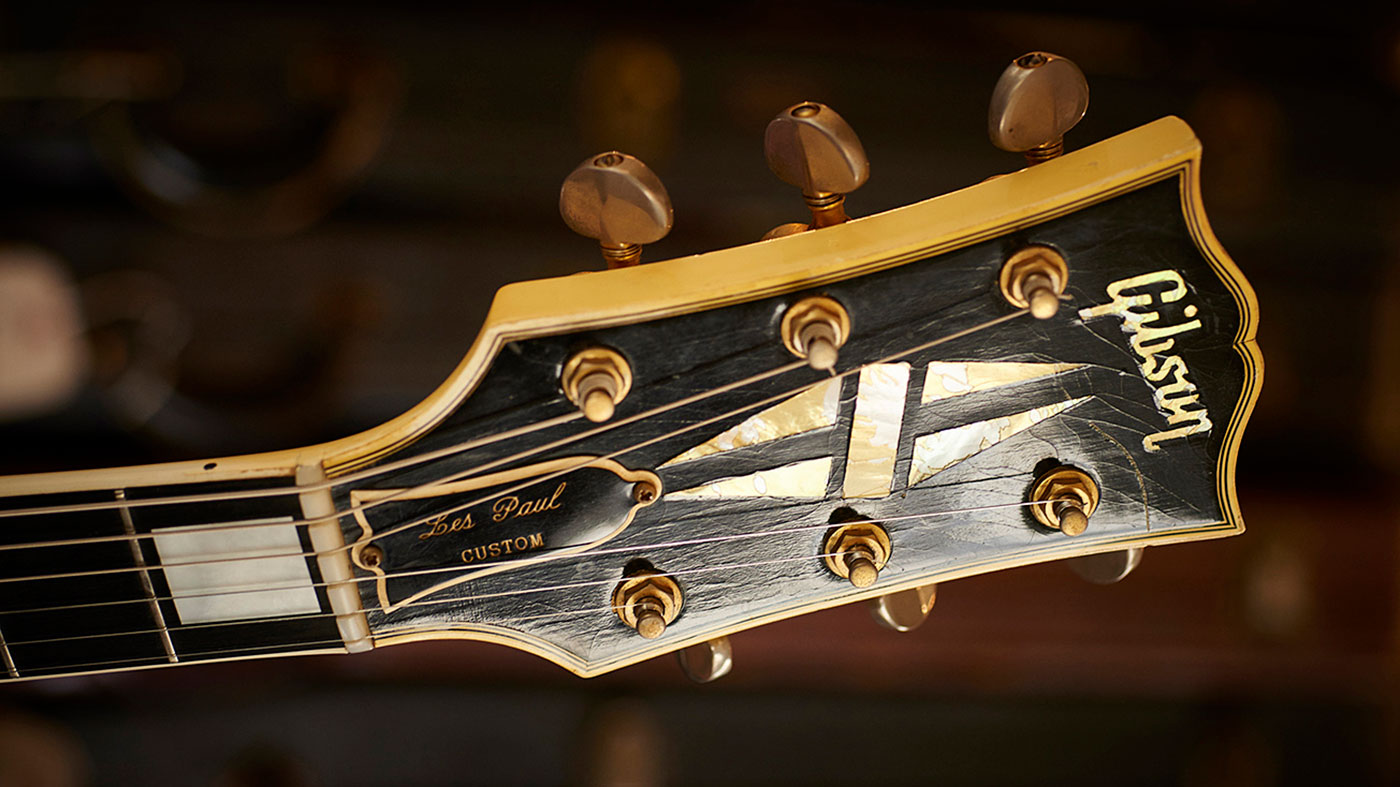
Journey to perfection
Despite the problems inherent in the ’61 SGs, they are highly prized by collectors. “I think that’s just a consequence of people wanting the first edition of something,” comments Tucker.
A clean ’61 Custom will happily blow a 10 grand size hole in your bank balance. Cherry Standards are also rated on lack of neck damage and a bright, unfaded finish. If you’re prepared to take one with a bit more visible mileage on it (what vintage buffs call a ‘player’s guitar’), you can get “a killer vintage SG for 30 to 40 per cent less”, says Tucker. “And Standards are more playable than the Customs, because they’re not Fretless Wonders.”
A clean ’61 Custom will happily blow a 10 grand size hole in your bank balance
The ’61 Custom inherited the infamously low-profile frets of its 50s forerunner, the guitar nicknamed the “fretless wonder” and “the Black Beauty.” “You’d have thought Les Paul would’ve liked the feel of the Custom,” says Tucker. “He didn’t bend strings much and those necks are very fast.”
Les Paul wasn’t the only one who didn’t enjoy the guitar’s performance. Fretless wonders had remarkably low action, but the small frets made bending strings hard work. The result was many players had their Les Paul Customs refretted. As it turned out, the ’61 SGs were a work in progress.
Over the next few years, the design was tweaked to provide a stronger neck/body join. The slim neck also gained a few pounds making it a bit more stable, though Pete Townshend revealed he loved shaking his SG Specials’ necks for added vibrato. By 1964, the birth year of George Harrison’s Revolver guitar and Clapton’s ‘Fool’, all the niggles had been ironed out and, according to collectors, the SG was released in its perfect form.
Les Paul never did make his peace with the SG. He didn’t have to. The original single-cut Les Paul Standard’s pulse blipped back into life on 22 July 1966, with the release of John Mayall’s Blues Breakers with Eric Clapton.
Thanks to Clapton’s Les Paul and Marshall-fuelled tone on the record, and subsequent LP disciples such as Peter Green, Michael Bloomfield and Jimmy Page, the original maple-topped single-cut designs returned to production in 1968.
Demand for the SG Standard was even stronger and the model has become Gibson’s all-time prime mover. So, on behalf of the blues, pop and punk players who can’t get enough of these brilliant guitars - and, of course, those about to rock - we salute the Gibson SG.

